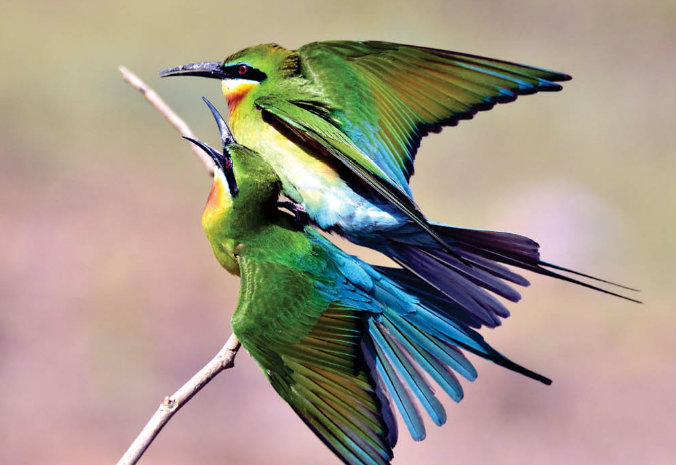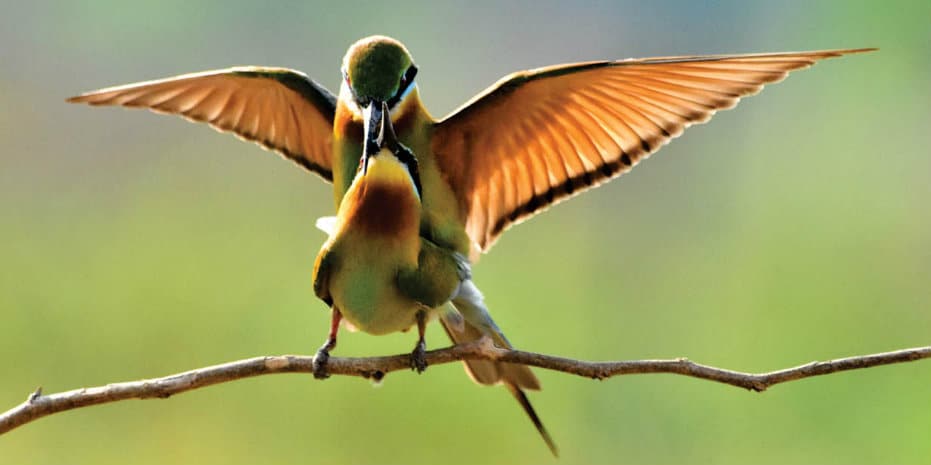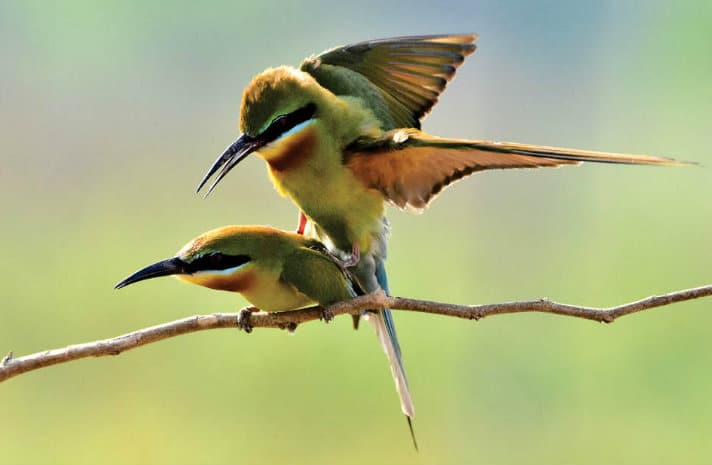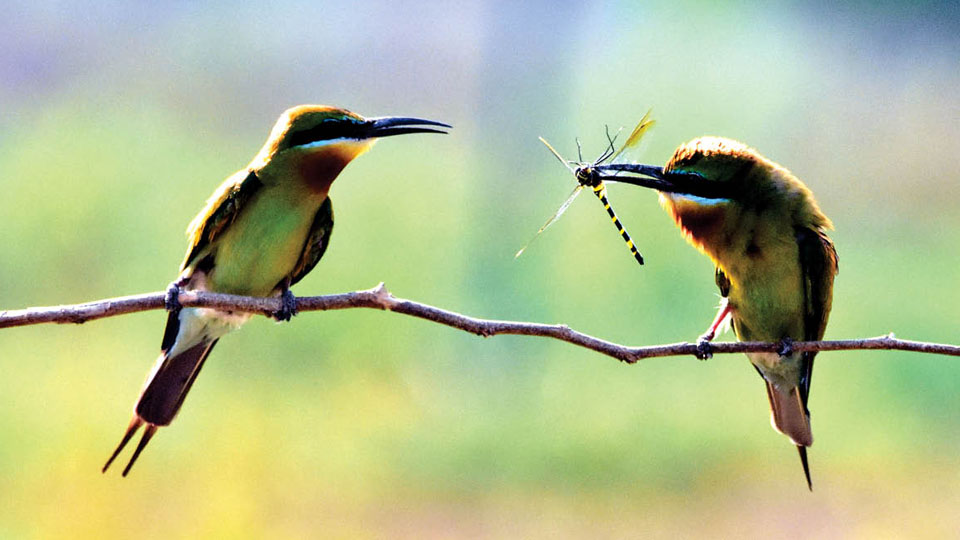By Ragoo Rao
Come March, with the summer heat on, the rivers neither in full stream nor dried up, right enough to expose the sand-banks, the enthusiastic bird-watchers from all over our Old Mysuru region, zero in on to a village — Naguvanahalli, close to Mysuru, off Bengaluru-Mysuru Highway, to photograph and observe the Migratory birds — the Blue-Tailed Bee-Eaters – Merops
These small birds, a little smaller than a Myna, predominantly green in

The Cauvery River flowing adjacent to Naguvanahalli, provides ideal grounds for nesting and breeding. Sand banks, to dig their tunnel-like nests, mud-banks in the river sides to again have nest tunnels, abundant insect population around the river with paddy and sugarcane fields, providing them and the prospective offspring good forage and the river banks with light wooded trees.
The Blue-tailed Bee-eaters come here in thousands, and have their Colonial nesting tunnels dug-up by bonded pairs of birds, up to a depth of 5-7 ft. deep. The nest has an egg chamber at the end and after the initial nest work is done, 5-7 eggs, oval in shape and white in colour are laid.

The female does the entire incubation and the male joins her in feeding the chicks once they are hatched. After the chicks are fledged and the Summer rains start in the region, the Bee-eaters have the urge to migrate back to their homelands, high up in North to the foothills of Himalayas. This cycle of Migration to our Mysuru region and breeding here and taking back the raised offspring has been going on for millenniums.
This stretch of land in the river with the sand banks and the surrounding region has been declared a Blue-tailed Bee-eater Breeding Grounds and any sort of activity, that can affect the Migratory-Breeding Cycle of these magnificent birds is prohibited. A prominent cricket celebrity from Mysuru was also made the Ambassador and Spokesperson for the conservation and protection of the Breeding Grounds.

The IUCN (Intl. Union for Conservation of Nature) though does not treat this as a Threatened Species, accepts that the general population of these birds are declining. The main reason for the decline in population is the degradation of their nesting grounds — the Sand Banks. Let the birds have their Sand Bars… We can do with alternate things for our needs.
[Pics. by SOM photographer M.N. Lakshminarayana Yadav]








Recent Comments